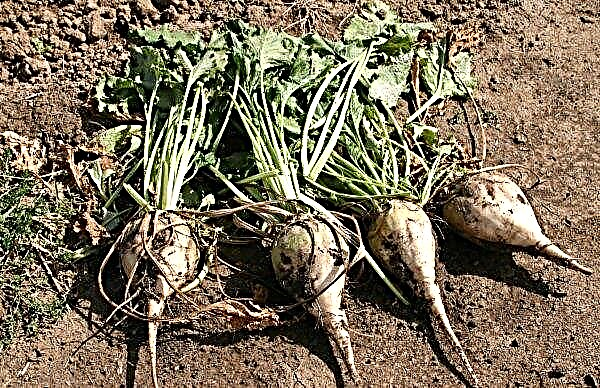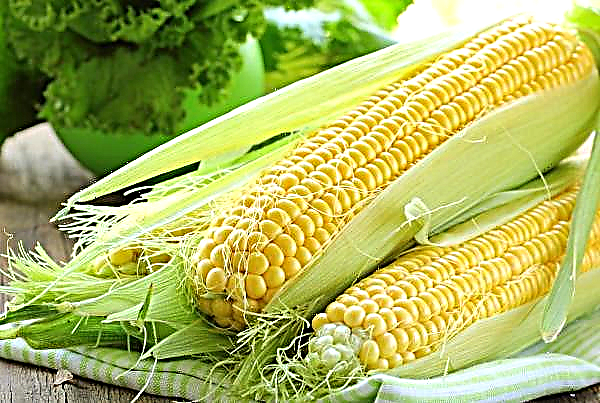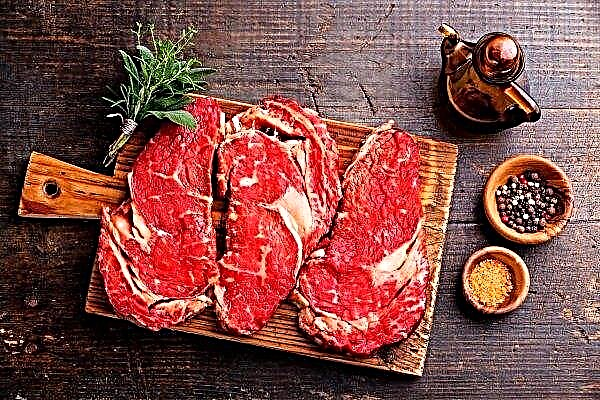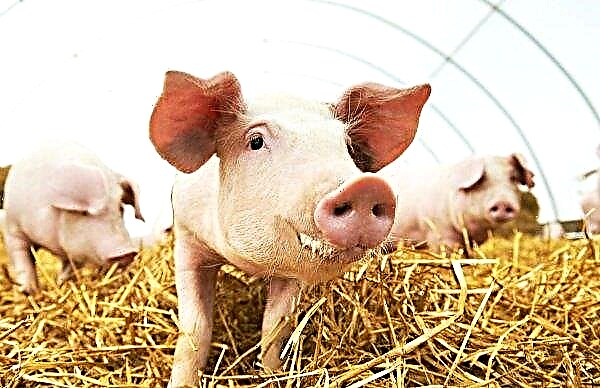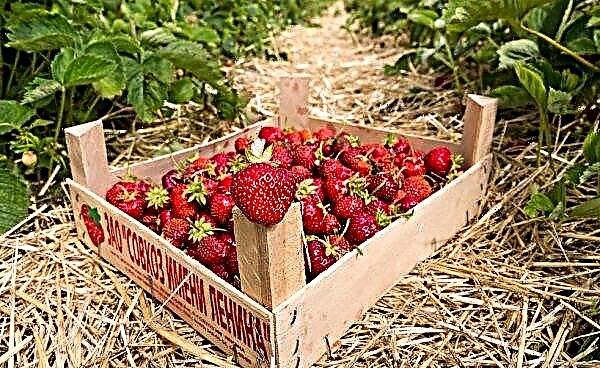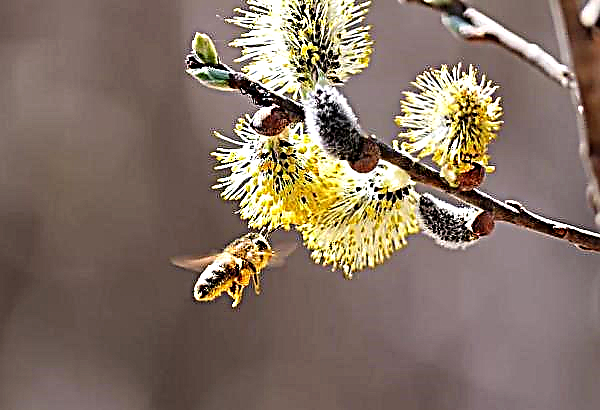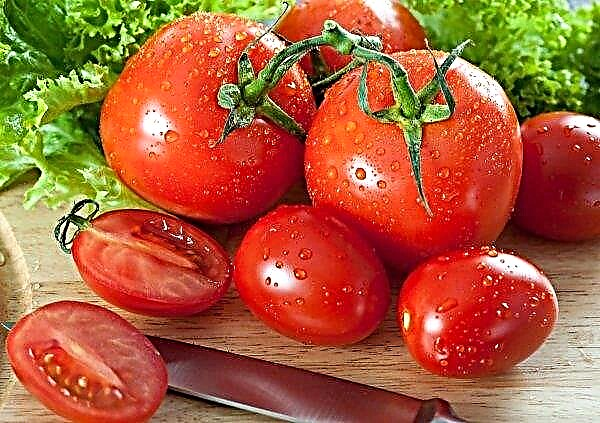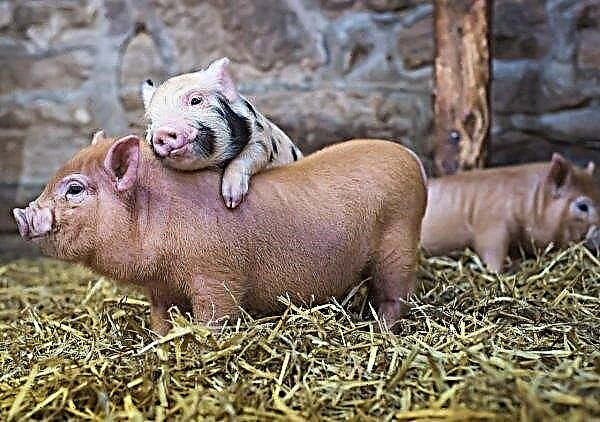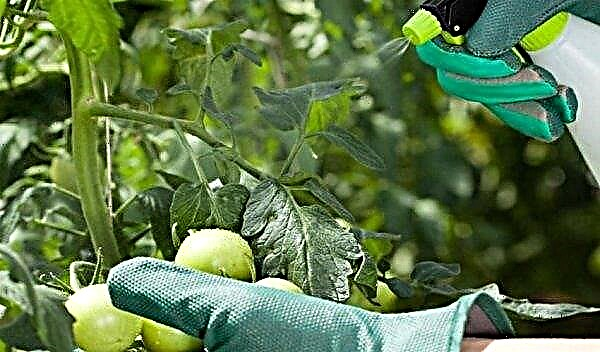Every year, cauliflower ceases to be a curiosity and becomes a traditional product on the table, so more and more often the plant crowds out other seasonal vegetables and rapidly conquers large areas of summer cottages. Among the abundance of varieties of cauliflower, one of the most popular is considered to be Goat-Dereza. Next, the main characteristics of the plant will be considered, as well as all the subtleties of its successful cultivation will be presented.
The history of selection of cauliflower Koza Dereza
This variety of cauliflower is one of the latest achievements of modern Russian selection. The plant was bred in the early 2000s, within the walls of the St. Petersburg company Biotechnika. By 2007, the hybrid received official regionalization and was included in the list of cultivated plants allowed for cultivation. The variety is approved for cultivation in any geographical latitude, but it develops best in temperate and southern climatic zones.
Description and characteristic
Goat-Dereza belongs to the traditional representatives of the Cruciferous family. This is an annual herb used to produce seasonal vegetables. However, the variety has its own unique characteristics that distinguish it from related varieties and hybrids.
Appearance of cabbage
It is a medium-sized plant, about 40 cm high. The root system of this cabbage is fibrous, located in the upper layers of the soil. Its stem is cylindrical; at the apex there are horizontally directed leaves with curved edges. The average size of the leaves is within 30 cm. The variety forms a rather compact leaf rosette, with slightly transparent small leaves. Their color is saturated, green tones, with a characteristic whitish waxy coating. A medium-hilly head of pale white color is formed from a leaf outlet. It consists of small inflorescences, ranging in size from 3 to 15 cm. The fruit is medium-sized, its shape is round, the tissues are dense, moderately moist to the touch, and there is no friability at the head. The top cover is minimal, the leaves practically do not cover it.
Their color is saturated, green tones, with a characteristic whitish waxy coating. A medium-hilly head of pale white color is formed from a leaf outlet. It consists of small inflorescences, ranging in size from 3 to 15 cm. The fruit is medium-sized, its shape is round, the tissues are dense, moderately moist to the touch, and there is no friability at the head. The top cover is minimal, the leaves practically do not cover it.
Ripening dates and productivity
Cauliflower cultivar Kosa-Dereza belongs to the early plants with a growing season of about 50–70 days. This makes it possible to grow it not only everywhere, but also to receive crops up to 3 times per season. Productivity of the variety is quite high, average productivity indicators reach 3 kg / 1 m². Moreover, depending on the growing conditions, the weight of one head can vary from 600 to 800 g.
Did you know? In Russia, cauliflower appeared in the XVIII century. The culture was introduced and popularized thanks to Empress Catherine II.
Advantages and disadvantages of the variety
- The main advantages of the variety:
- high productivity;
- friendly formation of inflorescences and ripening;
- excellent taste characteristics of the crop;
- guaranteed yield stability;
- frost resistance;
- good resistance to major diseases of the culture;
- almost perfect fruit shape;
- good storage and transportability;
- the output of marketable products is about 90%.
This cabbage also has minor flaws. First of all, the plant is considered quite whimsical, therefore it requires painstaking care and daily attention. Cabbage also requires bleaching, for this, during its growth, you need to build a small dome from the top leaves. This always requires additional labor and a lot of time.
The rules for growing varieties
There are two ways to grow cauliflower: seedling and seedling. Both of them give the opportunity to get good seedlings, but it is best to grow a crop using seedlings. This will help to avoid the death of young plants, and also provide them with an optimal microclimate for successful fruiting.
Preparing seeds for sowing
The preparation of cauliflower seeds is no different from the preparatory measures used for the sowing material of other crops. First, the seeds should be checked for quality, for this they are filled with clean water at room temperature. Seeds that have surfaced on the surface of the water film are discarded, they do not contain a healthy sprout, as well as the nutrients necessary for germination.
Important! For sowing, it is best to select the largest seeds, because only they can provide large and healthy seedlings that can actively develop and bear fruit in the future.
After this, the seed must be activated, they do this by heating in warm water. Seeds are dipped for 20 minutes in clean water with a temperature of about + 50 ° C, and then sharply cooled in water with a temperature of +18 ... + 20 ° C. Just before planting, the seeds are also sterilized. Do this by soaking in bactericidal solutions. Most often, the procedure is performed using a 70% alcohol solution (about 10 minutes) or a 2% potassium permanganate solution (20-30 minutes).
Further seedling care
Seeds are sown in common or individual containers in a row-like manner, while the seed bed should not exceed 0.5 cm, row spacing should be maintained for at least 3 cm. Sown containers are kept in a well-lit place at a temperature of about + 20 ° C, providing moderate soil moisture . About 5 days after sowing, seedlings appear, after which seedlings are transferred for 5 days to a cool place with a temperature of +6 ... + 8 ° С.
Then she should provide a daily temperature regime of +15 ... + 18 ° С, with a night decrease to + 8 ° С. This is the main requirement when growing cauliflower, otherwise it will not form fragrant heads. At the same time, the soil is watered sparingly, avoiding sharp drying out and waterlogging. Plants provide good lighting, with diffused light. The culture is very demanding on nutrients, so fertilizing seedlings is mandatory.
The first time it is done after the plants reach phase 3 leaves, for this, the containers are watered with a solution of 2% boric acid (2 g / 1 l of water). At the onset of phase 4 of the leaves, the seedlings are fed with a solution of ammonium molybdenum acid, with a calculation of 5 g / 10 l of water. A few days before diving the cabbage into open soil, it is fertilized with compounds of phosphorus and potassium. To do this, use a complex mixture consisting of superphosphate (2 g / 1 l of water) and potassium chloride (3 g / 1 l of water).
Site and ground preparation
Cauliflower loves well-fertilized soils, so the site is prepared about 2 weeks before the plants are transplanted. First of all, the soil is cleaned of plant debris, as well as other debris, and then carefully plowed to a depth of about 30 cm. After this, the site is fertilized with any organic fertilizer. Best for this is rotted manure or a mixture of equal parts of humus, peat and compost.
Fertilizers are applied at the rate of 10 kg / 1 m², after which the place under the beds should again be plowed well. During the preparation of the site, you must also take into account previous cultures. Worst of all, cauliflower grows and bears fruit after other representatives of Cruciferous, carrots, beets, radishes and daikon. At the same time, cucumber, onions and legumes are considered the best predecessors. When laying the beds, one should also take into account the neighbors: the culture does not withstand the neighborhood with wild strawberries, beans and tomatoes.
Transplanting seedlings in the open ground
Diving seedlings in open soil is carried out approximately 30 days after sowing seeds. When growing in the temperate zone, the period from the beginning to the end of April is best suited for this. Cabbage is dived only in the late evening, however in cloudy weather this can be done throughout the day.
Plants are planted in a row method according to the scheme 50 × 25 cm, to a depth of about 5–7 cm. About 1 cup of chopped wood ash is added under each plant. It will become the best source of important elements that will help plants to take root actively in the garden. At the end of the procedure, the plot is well watered.
Important! After planting sprouts on 2–3 days should be shaded. This will help seedlings avoid the negative effects of direct sunlight and improve its rooting.
Basic rules for the care of cabbage
The key to successful cultivation of any vegetable crop is to create an optimal microclimate on the site. To achieve this, a specific system for the care of planted seedlings is used, which allows you to achieve the first successes after a few weeks. It provides a skillful combination of regular watering, top dressing, as well as qualified soil care.
Watering and dressing rules
Goat-Dereza is undemanding to an abundance of moisture, however, periodic moistening for the variety is very important. Without this, you cannot achieve fragrant heads with a bright and memorable taste. To moisten the beds should be no more than 1 time per week, during periods of drought, the multiplicity of the procedure can be doubled, however, the soil must always dry out. Use only clean and settled water heated to ambient temperature for irrigation.
In open soil, they feed the culture only 3 times per season. The first time the beds are fertilized 10-14 days after diving seedlings, the following dressings are added alternately with an interval of 14-20 days. If possible, the number of top dressings can be increased, however, they are done before tying the heads, otherwise nitrates and other harmful substances can accumulate in the fruits.
For fertilizing the beds, the following fertilizer options are considered effective:
- cow manure solution (1:10);
- liquid bird droppings (1:15);
- mineral mixture of 50 g of superphosphate, 20 g of urea and 20 g of potassium chloride (per 10 l of water / 1–2 m²).

Loosening and weeding
Since most of the root system of cauliflower is located in the upper horizons of the soil, the culture reacts negatively to loosening the soil, so it is recommended to neglect the procedure, otherwise there is a possibility of damage to the roots of plants. For the same purpose, weeding of beds is minimized, making it only as necessary. You can almost completely abandon loosening and weeding with mulching.
The procedure not only has a detrimental effect on weeds, but also creates the necessary microclimate in the soil. The beds are mulched with peat, humus, sawdust, needles of coniferous trees, husks of seeds, etc. Mulch is densely covered with the trunk circle of each plant, with a layer of about 5-10 cm. The mulch layer is updated periodically, this is especially important after heavy and heavy rains, when part of the protective layer is washed off.
Did you know? The homeland of cauliflower is considered to be the territory of Syria. That is why until the XVIII century. in chronicles, the plant was known as "Syrian cabbage."
Pest and Disease Control
Lesions of cauliflower with all kinds of diseases and pests are not uncommon. Every vegetable grower encounters this problem, therefore, before planting a crop, ways to deal with problems should be familiar with. This is the only way to protect yourself from low productivity of beds, as well as from the destruction of plantings.
The main diseases affecting Goat-Dereza cabbage:
| Title | The most effective drug for processing |
| Alternariosis | Bordeaux liquid, colloidal sulfur, 2% solution of copper sulfate |
| Ring spotting | Any complex fungicide |
| Wet rot | 0.4% colloidal sulfur solution |
| Vascular bacteriosis | Planriz, Trichodermin |
| Fusarium | Fitosporin, Fundazol |
| Peronosporosis | Ridomil Gold |
The main pests of cabbage are considered to be the caterpillars of the scoop and cabbage whitewash, as well as the cabbage fly. Developing on the surface of the plant, they eat its foliage, which leads to inhibition of the growth of cabbage, as well as to a decrease in its productivity. They fight caterpillars by spraying the beds with Enterobacterin or any other interchangeable product. The fly can be eliminated with the help of the drug “Karbofos”, with its solution, an abundant circle of plants, as well as aisles, are abundantly watered.
They fight caterpillars by spraying the beds with Enterobacterin or any other interchangeable product. The fly can be eliminated with the help of the drug “Karbofos”, with its solution, an abundant circle of plants, as well as aisles, are abundantly watered.
Features of harvesting and storage of crops
Harvesting is carried out immediately after the heads reach technical ripeness, often it takes from 50 to 70 days after the first shoots appear. Determining the ripeness of the crop is quite simple: the heads acquire a saturated white color and density, and their diameter increases to 10 cm. The crop is cut neatly, leaving at least 2–4 leaves on the outlet. If several lateral shoots have developed on the bush, then 2-3 of the strongest are left (later on, young heads will appear on them).
Store cabbage in wooden or plastic open containers in cool rooms. The refrigerator, cellar or cellar are best suited for this, where the crop can be provided with a temperature regime of no higher than + 10 ° C, as well as moderate air humidity. In such conditions, the crop can be stored up to 2 months after harvest. To extend the shelf life use freezing. In this case, the heads are pre-dipped in boiling water for 5 minutes. This will save cabbage for 12 months after harvest. The Goat-Dereza crop is distinguished by its universal purpose. It can be used to make fresh salads, side dishes and soups. Cabbage can be boiled, stewed and fried, including in batter or breadcrumbs. In this case, it will be the perfect complement to meat, fish or other vegetables. Often cabbage is used as a filling for pies, as well as as the basis for the manufacture of pickles. The Kosa-Dereza variety is distinguished by its early maturity, productivity and excellent production characteristics.
The Goat-Dereza crop is distinguished by its universal purpose. It can be used to make fresh salads, side dishes and soups. Cabbage can be boiled, stewed and fried, including in batter or breadcrumbs. In this case, it will be the perfect complement to meat, fish or other vegetables. Often cabbage is used as a filling for pies, as well as as the basis for the manufacture of pickles. The Kosa-Dereza variety is distinguished by its early maturity, productivity and excellent production characteristics.
This plant is well prepared for cultivation in hot and moderately cold regions, therefore it can be successfully used for home and industrial vegetable growing in various climatic zones. However, to obtain a high crop, the culture should provide daily care, as well as create a special microclimate in the garden.

